Assessing & Planning
Equipment
Adam and Laura’s strategy when they started out in 2005 was to use off-farm income to support themselves and to use their initial farming profits to acquire tractors, machinery, and other capital assets. Their goal was to buy as much equipment as possible while renting land, so that when they purchased a farm they could focus on the monthly mortgage payment. Table 2 summarizes Laura and Adam’s equipment purchases.
| They brought their 6’ x 6’ cooler with them to the new farm and placed it outside the barn next to the packing area (Figure 20). They keep it at 40˚F and use it for storing local CSA boxes. The new larger cooler that they added to the barn is kept between 35˚F and 45˚F and is used for storing Twin Cities CSA boxes and farmers market product. The primary uses for each tractor are described in Figure 21. Adam and Laura prefer to purchase used tractors and implements when possible because they are more affordable and sometimes more widely available. |
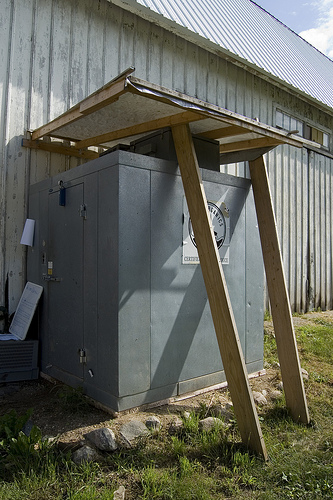
Figure 20: Adam and Laura's 6' x 6' cooler is in an accessible location, giving their CSA members flexibility with pick-up time. |
Certain implements that are custom-made, such as the tine weeder and the basket weeder, were purchased new. Adam’s mechanical abilities are important for maintaining the equipment and allowing them to rely primarily on used machinery.
Figure 22: Workers transplant seedlings while Adam drives the electric tractor. |
As an example of Adam’s mechanical skills, he converted one of their gasoline tractors to an electric tractor using eight golf cart batteries. The primary motivation was a gas motor that was smelly and noisy, but a side benefit of the conversion is that they can attach two seats to the back for planting. Workers can sit with flats of seedlings between and in front of them for transplanting (Figure 22). With a gas motor, they would need a special (and expensive) gear to go slowly enough for this approach. |
Figure 21: Adam and Laura's fleet of tractors.
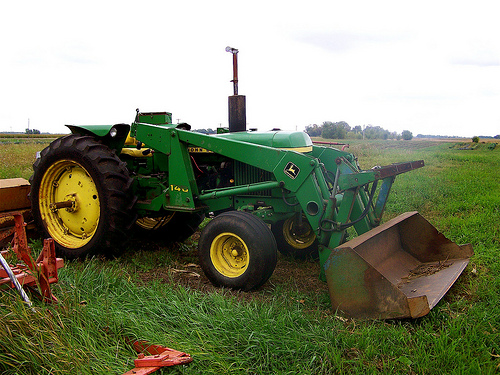 |
(a) This John Deere 2640 is used for primary tillage and soil preparation, including field digging, chisel plowing, discing, rototilling (sparingly!), and plowing. It is also used for mowing. |
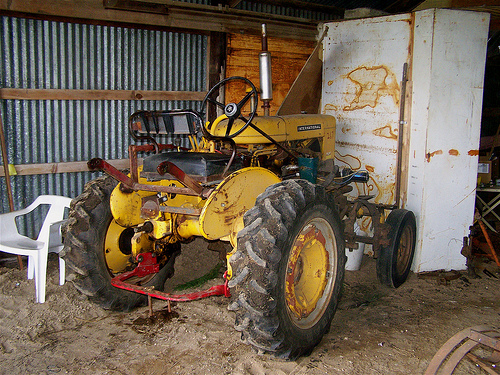 |
(b) Adam and Laura’s first International Harvester 140 is used for cultivating 1- or 2-row vegetable crops and for sidedressing. It is also used with the potato digger. |
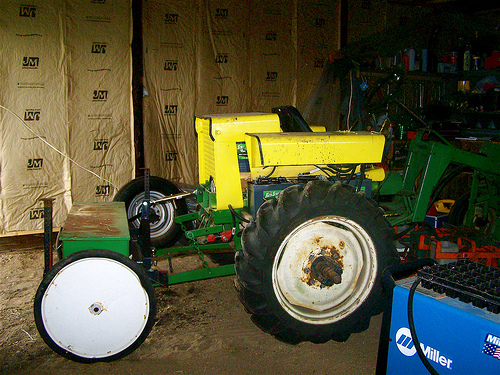 |
(c) The Hefty G is used for planting (both seeding and transplanting) and for fertilizing. This tractor was converted to an electric motor in 2008. The Gandy fertilizer spreader is attached to the back of the tractor. |
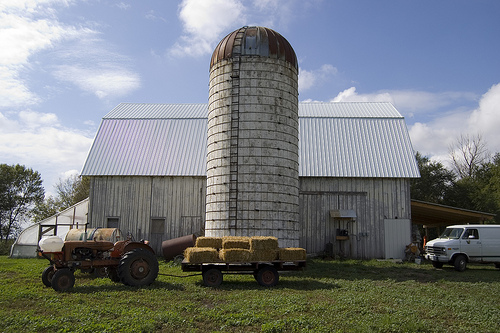 |
(d) Adam and Laura bought this Allis Chalmers WD 45 from the farm’s previous owners and use it for pulling wagons and spraying. |
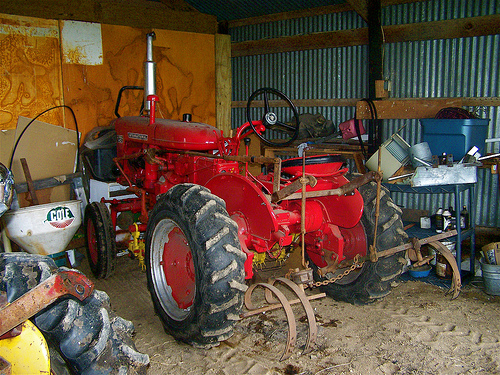 |
(e) Their second International Harvester 140 is used for cultivating with the basket weeder (shown under Production Models and Methods/Field Production). |